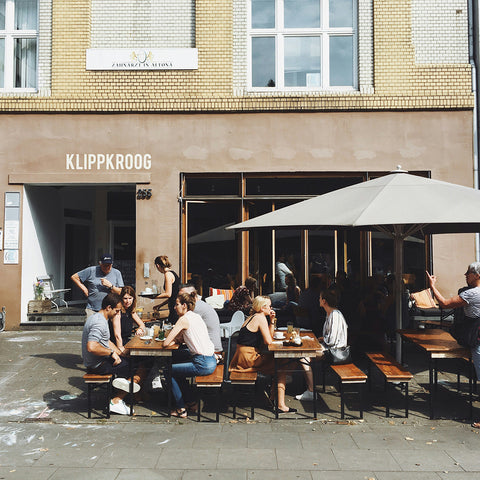After journeying through Italy, France, Netherlands & Spain on our last European coffee culture tour, it is now time to explore a few more countries from the continent.
What does their coffee industry look like? Do they have particular traditions revolving around coffee consumption? How does their coffee culture differ from that of other parts of the world? These are some of the questions we’re looking to answer through this blog post.
Sweden
Coffee was brought into Sweden in the late 17th century. They are amongst the top consumers of coffee in the world with nearly 3 out of 4 Swedes drinking at least a cup of coffee every day.
What’s more, is that they have an entire tradition that is all about taking a coffee break - it is called fika. Whether with friends, family or colleagues, it is normal for Swedes to meet up for a fika daily, and get coffee with a sweet on the side.
A typical Swedish coffee is a dark roast and brewed using the drip method. They are very strong in taste, often compared to an espresso. Some may even say that the beans are roasted well past the level where the flavour is still discernible.
Kokkaffe is the Swedish word for boiled coffee. To make a kokkaffe, they simply add ground coffee and cold water to a pan, bring the mixture to a boil, and strain into a cup. This method is also traditionally used over an open flame, especially if the coffee is being made outdoors.
Germany
Coffee has been around in Germany since the 17th century. The first coffee shop was opened by an English merchant.

Germans tend to prefer mild roasts with a fruity flavour profile. They generally brew milky coffees too.
You’ll often hear that they are not always particular about the quality of coffee but more about the experience of drinking it with people.
Many of the coffee shops in Germany differ from those around the world in terms of not just what’s offered but also how people spend time there. It’s more about socialising and less about finding a spot to work from.
A fun fact about coffee in Germany is that it was once made illegal. The beverage became so popular that reportedly the beer industry revenue began to fall. The King of Prussia then made possession and consumption of coffee illegal as a way to control this. The decree was revoked after his reign.
Melitta Bentz, a German woman is the brain behind the invention of the coffee filter. She patented it in 1908, and all the paper filters we use today are inspired by her work.
Those who have a sweet tooth must try Eiskaffee. It’s a delightful mix of cold coffee, vanilla ice cream, whipped cream, and cocoa powder.
UK
The United Kingdom has a long-standing history of being a tea-drinking nation. Considering that, when coffee made its way in the mid-17th century, it garnered more attention than one would expect. By the late 1600s, there were thousands of coffee shops in the UK.
Today, you’ll find several artisanal shops that focus on the quality of brew and providing the complete experience to customers, i.e. educating and training about the source of coffee, its impact, and so on.
The UK's coffee culture is influenced by pop culture in a manner of saying. In the 90s, when a lot of sitcoms were all the rage in America, the young British audience likened the idea of enjoying a modern lifestyle to that of sitting in coffee houses with friends. That’s how coffee-drinking habits were shaped in the UK.
Flat white is considered to be one of the most popular coffee drinks here. Smoky and bitter are some terms people generally use to describe a regular coffee brewed in the UK.
There’s massive scope for specialty coffee, as a report suggests that 15% of the coffee consumed outside of homes is of the specialty grade.
Hungary
The spread of coffee in Europe began with coffee being introduced into Hungary in the 16th century. This event is associated with the Turks, as it was during their invasion that coffee was brought into the spotlight in Hungary.

As a result, they have adopted some Turkish coffee traditions along with the way the beverage is brewed.
Did you know that coffee is the national drink of Hungary? Hungarians prefer a strong mocha with high caffeine. The coffees are generally bitter and full-bodied. Some even tend to have a nut-based flavour profile.
Hungarians are said to drink 2-3 cups of coffee a day.
Budapest, being the capital of the country, is a hotspot for cafés. In the 19th century, there were hundreds of coffee shops spread across the city. But with the wars, many have been lost to the past.
Kalocsa, a town in Hungary deserves some attention if you love coffee and are open to trying different coffee flavours. Paprika-flavoured coffee is a creation that has gotten some attention. Previously, the same coffee producer had even brought out raspberry and cherry-flavoured ones.

